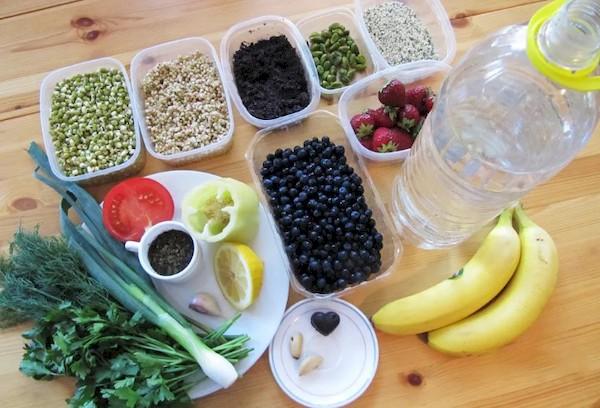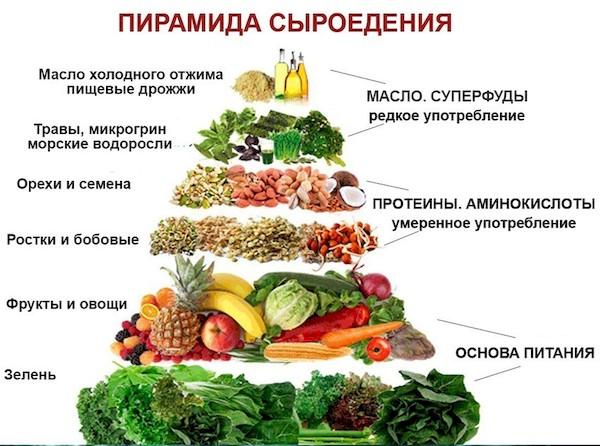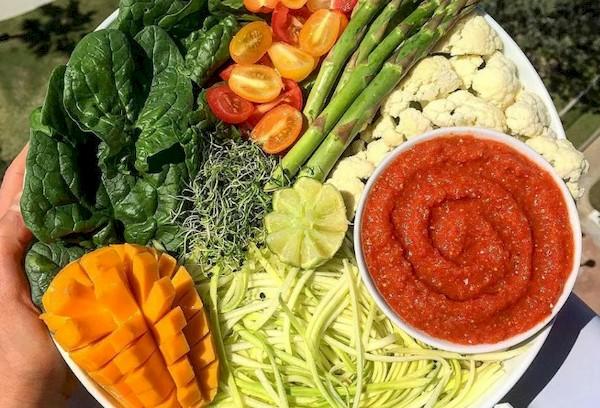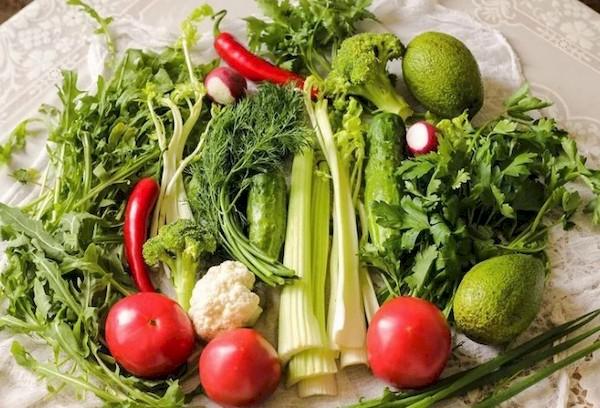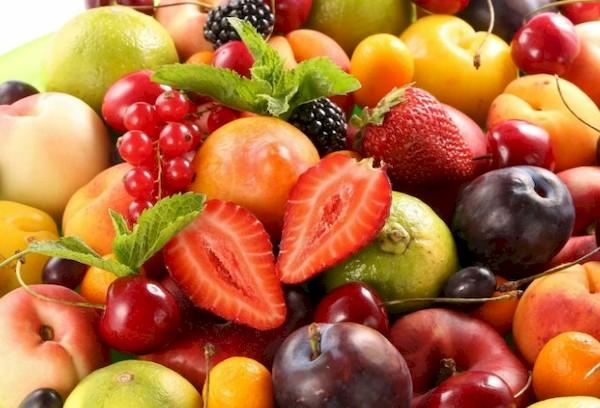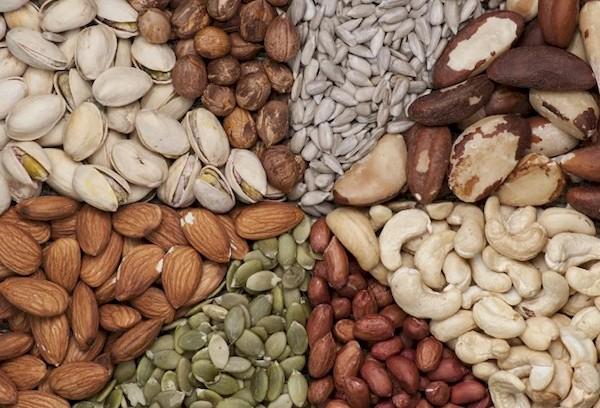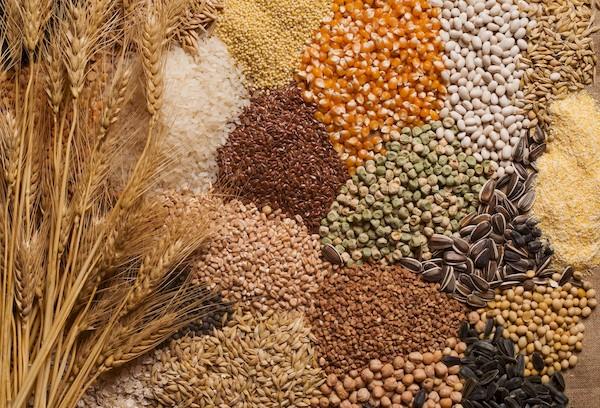What to eat as a raw foodist - list of products
Content:
For many, raw foodists are people who seem to be from another planet, who eat only nuts, fruits and vegetables. In fact, if a person has been a raw foodist for a long time, what to eat is not a question. The diet on a raw food diet can be much more varied than that of people eating “varenko”. The term itself implies eating only or predominantly thermally unprocessed food. Products are not heated above 40-42 degrees.

Example menu
Summer and autumn are the most fertile time for a raw foodist. A lot of vegetables and fruits ripen, which help to greatly diversify the diet. What you need to know:
- A raw vegan eats about 1 kg of vegetables and 1 kg of fruit per day.
- An omnivorous raw foodist consumes raw meat, fish, eggs, oysters, cold-pressed cottage cheese and other animal products along with plant products.
- A vegetarian raw food diet allows the consumption of milk, but excludes meat. The basis of the diet is a variety of plant foods.
- There are raw foodists, fruitarians, who eat mainly fruits.
The menu varies greatly depending on a person's preferences. Here's what raw foodists themselves write about their diet:
- “I eat what grows around me. I live outside the city in Spain, there is a vegetable market nearby. The last month I ate mainly melons, grapes, and figs.”
- “On a raw food diet, a paradox arises: it is not you who choose food for the body, but the body itself requires certain food. The sooner you understand what you need, the better. I can eat only fruits for a while, then suddenly switch to raw potatoes. Sometimes I ate cabbage for a week, and tuna and corn for another week.”
Menu example:
- After waking up: a glass of warm water with lemon juice (0.5 lemon), a spoonful of honey.
- Breakfast: 1 avocado or 3 apples.
- Lunch: salad of grated carrots and kohlrabi with a spoonful of ground flax seeds and a spoonful of canola, sprouted beans, an apple.
- Dinner: 1 kg of fruit - bananas, tangerines, apples.
List of foods you can eat during the week:
What does a raw food diet consist of?
The raw food diet is based on the fact that raw food is much richer in nutrients than thermally processed food. Cooking and frying deprive the human body of millions of kilograms of valuable substances. Therefore, raw foodists strive to eat exclusively raw, fresh foods.
Many of these people do not cook at all, or cook only in exceptional cases. They eat simply: wash the vegetables and fruits, cut them, eat them. I peeled the nuts. Crunched the seeds. Some people eat only one type of product at a time. This is called a mono-raw food diet.
Other raw foodists, mostly beginners, are concerned with finding tasty, healthy and satisfying raw food meals. They prepare jelly with sprouted grains, green smoothies, all kinds of salads, desserts and even raw food rolls. Interesting recipes can be found in books (for example, V. Butenko “Express recipes. Raw food diet”, E. Nizeenko “Living recipes.
Raw foodist cookbook") and on the Internet:
- Raw bread (pizza base):
- Raw food cake:
People who are just getting acquainted with the raw food diet should understand that 100% raw foodists are extremely rare.
Everyone in one form or another adds non-raw food products to their diet: cheese, vegetable oil, steamed porridge. But at the same time they try to process food minimally. A raw food diet is not fasting, in which if it is not 100%, then it is wasted.
Vegetables and greens
Raw foodists consume vegetables in large quantities. Particular preference is given to:
- carrots;
- kohlrabi, red, white cabbage;
- young corn;
- pink and dark beets;
- zucchini.
For better taste and health, raw foodists add a lot of greens to their dishes: parsley, cilantro, dill. Spinach is a valuable source of protein. Green smoothies are made from it. They eat onions and garlic. For many, it is a revelation that raw foodists eat raw potatoes. Yes, and they find such food very tasty, but cakes and grilled chicken are simply disgusting.
Taste buds react differently to foods on a raw food diet.
Berries and fruits
Almost all fruits and berries are very tasty raw. They contain sugars that provide quick energy. Most of all raw foodists love:
- Wild berries: strawberries, blueberries, blueberries, lingonberries, cranberries, elderberries. They do not contain chemicals, are rich in taste, and are not “plastic”.
- Apples. They are cheap and are most often grown without treatment with chemicals.
- Avocado. Contains healthy fats and easily turns into sauce.
- Seasonal fruits and berries (local).
After some time, raw foodists begin to choose their foods very scrupulously. When eating a raw food diet, chemical tastes and poor quality of food are acutely felt. Many people buy food in specialized stores, but most find a way out by growing their own vegetables and fruits.
Nuts and seeds
Seeds and nuts serve as a source of fat. They are very high in calories, satiate well, but can cause excess weight gain. Experienced raw foodists try to consume nuts and seeds occasionally. If consumed regularly, they can cause problems in the body due to their antinutrient content.
What raw foodists eat:
- cashew nuts;
- flax seeds;
- chia;
- pine nuts;
- sesame;
- pumpkin seeds, sunflower seeds;
- almond;
- Walnut;
- peanut.
Product pyramid for beginners:
Cereals
The grain is germinated before eating. The hatched sprouts contain a lot of vitality and useful substances. Sprouting allows you to soften the cereal, making it more tasty and easily digestible.
The sprouts are especially good:
- quinoa;
- green buckwheat;
- wheat;
- oats;
- rye.
Raw foodists eat sprouted legumes with great pleasure: lentils, chickpeas, mung beans, and peanuts. Less commonly, cereals are steamed: poured with warm water and left overnight. Then add vegetables or fruits with honey to the porridge.
Animal food
In the raw food diet, a distinction is made between the fire of death and the fire of the sun. The first kills the food, and the second makes it safe and edible.
What animal foods do raw foodists eat:
- fish;
- seafood;
- meat;
- milk;
- eggs;
- salo;
- raw minced meat, cartilage.
Animal food satisfies hunger well, is quite tasty, but has a serious drawback. Raw fish, oysters and meat often cause serious poisoning. Eating such foods is extremely dangerous, especially if they come from a store. Only the freshest fish and the freshest meat from a healthy animal are suitable for a raw food diet. Thus, fishermen and hunters often become omnivorous raw foodists.
There are those who consume pickled animal products, cold smoked.They are safer in terms of poisoning, but are no longer considered completely raw food. It is better to eat basturma, which is dried in the sun.
The main point of a raw food diet is to improve your health, to consume living food that contains prana (vital energy). Physically, this is expressed in whether the product’s own enzymes remain in the product or not. Preservatives, which include salt and marinades, kill food. Food also becomes dead when frozen.
Question answer
What should a raw foodist eat in winter?
For the winter, raw foodists freeze a lot of berries and green peas. Many people eat dried fruits. Sauerkraut is also prepared. The basis of the diet is sprouted seeds and grains, raw beets, cabbage, and onions, which store well. Store-bought fruits are also eaten if they are of good quality.
Is it possible to heat food?
Yes. Food can be heated in the microwave and eaten warm. This is not cooking, and does not contradict the principles of a raw food diet.
Beginning raw foodists often make the mistake of trying to eat a lot of protein foods so as not to feel hungry and simply “for health.” However, such nutrition promotes the development of pathogenic putrefactive microflora. They try to reduce the amount of high-protein foods in the diet to a minimum level. Instead, the emphasis is on vegetables. Switching to a raw food diet is not easy. Usually the transition occurs gradually, over 2-3 years. During this time, the body is rebuilt and functions in a different mode. A raw foodist doesn't need a list of foods to figure out what to eat. He feels what he needs, eats for the sake of life and health, and not for pleasure.
